
Kaloko-Honokōhau National Historical Park
Kona,
Hawaii
Overview
Kaloko Honokohau park offers a number of trails, and is popular for its ancient rock petroglyphs and sea turtles along the coast. There is a small visitor center which has great historical information about the area and its use in the past. Follow the Ala Mauka Makai trail from the visitor center to Honokohau Beach, and be sure to take the very short side trail to view the petroglyphs. Once at the beach, look for sea turtles. They can be a little hard to see at first, but they are typically in the water or resting on the rocks near where you enter the beach. Walk north along the beach to view the Aimakapa Fishpond, and then retrace your steps back to the visitor center.
Directions
Parking
Trip Reports
My son was excited for this hike, as the beach area was known to have sea turtles and we had struck out finding sea turtles the previous day at Kahalu’u Beach Park. I ended up coming back here with my parents the day after they arrived to do the same hike. It’s a nice short hike, with great cultural information and sea turtles (saw turtles on both hikes)! Note, I forgot to start my gps tracking until part of the way into the hike...
There are a number of trails available in the park, but we opted to hike on the Ala Mauka Makai Trail to Honokohau Beach. While you can park at the Kona Sailing Club and use the South entrance of the park for a very short walk to Honokohau Beach and the sea turtles, we wanted to go to the visitor center to learn more about the park as well as get a stamp in my son’s national park book. We did the short concrete loop around the visitor center and read the signage along the way and then ventured onto the trail.
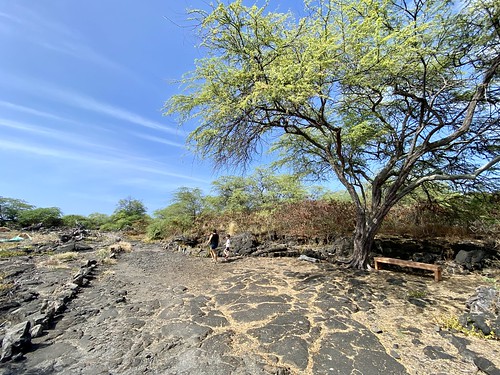
The trail starts off as gravel, and then after a short distance it turns to lava rock. I believe I read somewhere that in Hawaii the lava was typically a’a flow of basaltic lava, but you know, it’s just easier to say lava rock. Back to the important stuff - I wore my trail running shoes as I thought it might have been tough to walk on lava rock, but the path is pretty easy to navigate over.


We caught a glimpse of the ‘Aimakapa Fishpond, however they were doing restoration around the shore and you couldn’t approach any closer. Shortly thereafter, we reached the Ki’i Pohaku, also known as the Petroglyph Path. Walking along the raised wooden pathway we noticed some numbers - it wasn’t until my second time with my parents that I realized they had a couple of hard copy guides in a small metal container at the beginning of the trail, with information for each number. Some of the petroglyphs were hard to make out in the afternoon sun, so it would have been nice to have the guide.
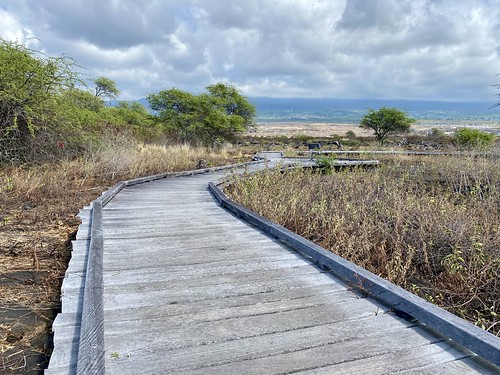
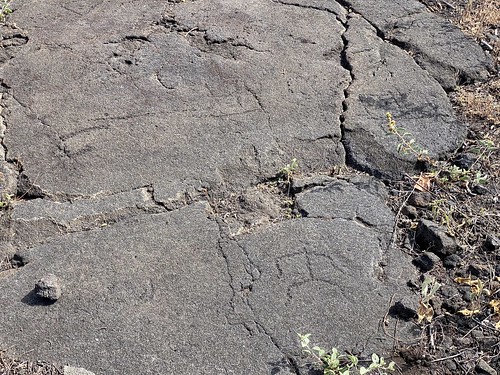
It was then a short walk to the beach, where we ventured out onto the rocks and quickly spied a couple of sea turtles. They blend in at first, and I doubt I would have noticed them if I had just been strolling along the beach. There were a couple in shallow water, and it looked like they might be feeding. Another sea turtle was resting on the rocks out of the water. The rocks were fairly slippery, so be careful when walking on them...

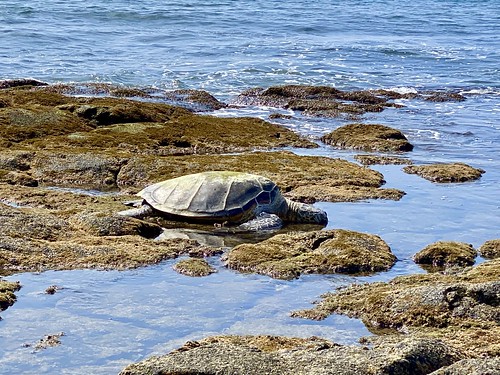
We then trudged along the beach until we reached the fishpond. It was interesting to learn at the visitor center how the Hawaiians constructed the fishpond and fishtrap to catch their meals. After snapping a couple of photos, we then turned around and headed back the way we came. We were thinking of going to the fishtrap on the way back, however all of us were hot, and a little tired, and we opted to call it a day and make haste back to the car.
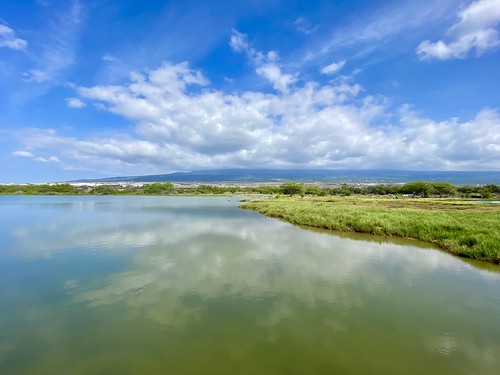


A great short hike through a National Historic Park to see petroglyphs and sea turtles!
